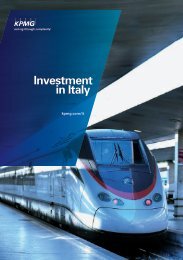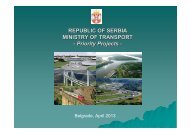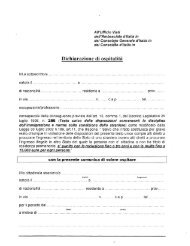Innovation Canada: A Call to Action
Innovation Canada: A Call to Action
Innovation Canada: A Call to Action
Create successful ePaper yourself
Turn your PDF publications into a flip-book with our unique Google optimized e-Paper software.
Program Mix and Designthe needs of innovative Canadian firms,especially small and medium-sized enterprises(SMEs), <strong>to</strong> help them grow and prosper.These complementary initiatives include thoserecommended in Chapter 5: (i) shored-upsupport for the Industrial Research AssistanceProgram (IRAP) <strong>to</strong> provide advice, men<strong>to</strong>ringand funding in support of R&D andcommercialization projects by SMEs; (ii) a newcommercialization vouchers pilot program <strong>to</strong>help SMEs connect with innovation partners;(iii) a new concierge system <strong>to</strong> improve clientservice; and (iv) increased access <strong>to</strong> a highlyskilled and entrepreneurial workforce. They alsoinclude other measures discussed in the nextchapter: (i) using procurement and relatedprogramming <strong>to</strong> foster demand for businessinnovation, particularly by SMEs; and(ii) improving federal support for risk capital atthe start-up and later stages of growth <strong>to</strong> helpsmall firms become larger ones, while retaininga significant presence in <strong>Canada</strong> as they grow.The end result of this rebalanced program mixwould be a substantial increase in the range andsophistication of federal support for SMEs.Overview of the SR&EDProgramThe SR&ED tax incentive program is designed <strong>to</strong>encourage Canadian businesses of all sizes andin all sec<strong>to</strong>rs <strong>to</strong> conduct R&D in <strong>Canada</strong> that willlead <strong>to</strong> new, improved or technologicallyadvanced products or processes (Box 6.2).The SR&ED program generally provides a20-percent tax credit <strong>to</strong> Canadian businesses,with an enhanced 35-percent federal tax creditavailable <strong>to</strong> qualified small businesses that areCanadian-controlled private corporations(CCPCs). 1 The enhanced credit is fullyrefundable up <strong>to</strong> an expenditure limit, which is<strong>to</strong> say that the enhanced credit is payableregardless of the tax position of the company.The refundability feature for small companiesmeans, for example, that many youngcompanies that have little or no taxable incomereceive cash <strong>to</strong> help finance their R&D andpotential growth.The current expenditure limit <strong>to</strong> access the35-percent credit with full refundability is$3 million, which at this limit can generate anannual tax credit of just over $1 million. 2 The$3-million expenditure limit is gradually reduced<strong>to</strong> zero as prior-year taxable income rises from$500 000 <strong>to</strong> $800 000 or as prior-year capitalassets rise from $10 million <strong>to</strong> $50 million.Spending above the expenditure limit qualifiesfor a 20-percent credit that is 40-percentrefundable but, once taxable income exceeds$800 000 or capital assets exceed $50 million,CCPCs receive the standard non-refundable20-percent SR&ED tax credit.In 2007 — the most recent year for which suchdata are available — some 20 000 smallbusinesses that were CCPCs received about$1.3 billion in SR&ED tax credits (Figure 6.3).(By way of contrast, 1082 SMEs received a <strong>to</strong>talof $69.1 million in funding from IRAP in 2007.)About 3900 other firms earned roughly$2.0 billion in SR&ED tax credits in 2007. Theaverage credit value for small businesses wasabout $65 000, compared with an averageclaim of approximately $700 000 for largercorporations. The number of qualified smallbusinesses increased by more than 25 percentbetween 2004 and 2007, compared with a verymodest growth for large businesses. Part of the1 To have access <strong>to</strong> the 35-percent credit, the claimant needs <strong>to</strong> be incorporated as well.2 Only current expenditures are eligible for full refundability; capital expenditures, which account for about 4 percent of<strong>to</strong>tal costs, are eligible for a 40-percent refund. Access <strong>to</strong> full refundability is restricted <strong>to</strong> CCPCs with prior-year taxableincome up <strong>to</strong> a maximum of $500 000, which is gradually reduced <strong>to</strong> zero as capital assets increase from $10 million <strong>to</strong>$50 million.6-5
















